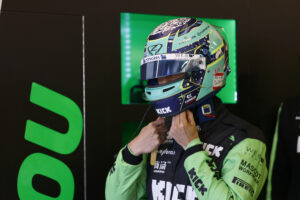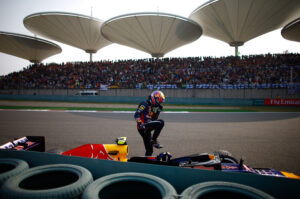The 17th race of the 2016 Formula 1 season will take place at the historic Suzuka race track in Japan this weekend. The Japanese Grand Prix (Nihon-guranpuri) is one of the most anticipated races in the F1 calendar. This is the 32nd running of the Japanese GP, with all but four races hosted at Suzuka (the races in 1976,1977,2007,2008 were held at Fuji).
The History
The original Suzuka track (built in the 1960s) was a 5.8-kilometers long circuit owned by the Japanese automaker Honda. The first official Japanese GP was however held at the Toyota-owned Fuji track in 1976. This was the first race held at an Asian venue, before China and the East Asian Tigers joined the F1 calendar. The first Japanese GP marked the rise of Japan as a top economic power after World War II, with iconic Japanese automakers like Honda, Toyota and Nissan becoming world leaders in the automotive industry.
The inaugural race in 1976 was won by the American Mario Andretti for Lotus. The Grand Prix distinguishes itself with a classic track described by most drivers as the ‘most challenging track’ in F1. The passion, knowledge and unparalleled support of the Japanese fans creates the atmosphere that makes this a truly unique race. After 1977, the Japanese GP was not held again until 1987, when it returned as the penultimate race of the season. That first race in 1987 at Suzuka was won by Gerhard Berger for Ferrari. An unfortunate accident in the rain in 2014 led to the death of the very popular Marussia F1 (Manor) driver Jules Bianchi. This is a painful memory for all F1 fans.
The Drivers and Teams
The McLaren team sits atop the leader board with 9 wins at the Japanese GP (with one win at Fuji in 1977). Arch-rivals Ferrari have 7 wins at Suzuka. Six of the last seven races have been won by Red Bull Racing (4 wins) and Mercedes (2 wins in 2014, 2015). Michael Schumacher has the most wins at the Japanese GP with six victories, all but one in Ferrari colors (1995 win was for Benetton). Sebastian Vettel is the next most successful driver with four victories at Suzuka (2009, 2010, 2012, 2013). Lewis Hamilton has chalked up three wins at the Japanese GP (2007, 2014, 2015). Among the other current drivers, Fernando Alonso (2006, 2008), Kimi Raikkonen (2005), and Jenson Button (2011) have won the Japanese GP.
The Japanese GP was one of the last races on the F1 calendar in its early years and became a venue for many historic races. The drivers’ title has been clinched at the Japanese GP 12 times, more than any other race on the F1 calendar. The first race in 1976 saw a titanic battle all season-long between Niki Lauda and James Hunt end at the Japanese GP, with Hunt finishing third and clinching the drivers’ championship by one point. This rain-soaked dramatic race and the whole season has been immortalized in the Hollywood movie “Rush”.
In 1988, Ayrton Senna driving for the McLaren-Honda team won the Japanese GP at Suzuka. This led to his first drivers’ championship and the start of his dramatic rivalry with teammate Alain Prost. The next two seasons saw tough battles for the title between the two teammates culminate at the Suzuka track with race-ending collisions and disqualification. The World Championship was won by Prost in 1989 and by Senna in 1990. The intense and bitter rivalry with the controversial races in Suzuka will forever be etched in the memories of F1 fans.
The Circuit
The 5.807 km Suzuka circuit with 18 corners (10 right-hand and 8 left-hand corners) with the high-speed ‘figure 8’ is the one of the fastest tracks on the F1 calendar with an average speed of over 235 km/h. The track is very challenging with high-speed corners, sweeping curves and straights punctuated by slow speed corners. Suzuka demands a high downforce setup. The cars are on full throttle 70% of the time and the fuel consumption is high. The brake-wear is low, with heavy loads placed on the engines.
Sectors, Corners, and DRS Zones
Sector 1 from Turn 1 to Turn 7 is a high-speed sector starting with a sweeping right-hand corner (Turn 1) followed by another slower right-hand corner (Turn 2). This leads to the rapid “Esses” (Turn 3 to Turn 6) demanding quick directional changes. The drivers need to get these curves absolutely correct with quick gear changes and high loads are placed on the engine. The long sweeping left-hand Dunlop curve (Turn 7) ends the quick first sector.
Sector 2 from Turn 8 to Turn 14 starts with the right-hand Degner Curves (Turn 8 and 9) leading to a short straight under the bridge. This is followed by a sharp hairpin (Turn 11), followed by a sweeping right-hand curve (Turn 12), leading to the Spoon curve (Turns 13 and 14). This leads to a long straight to end this second sector.
Sector 3 from Turn 15 to Turn 18 starts with the iconic 130R (Turn 15). This is a flat out high-speed left hand corner which has been altered due to safety concerns after major crashes in the early 2000s. This leads to the slow right-left chicane at the Casio triangle (Turns 16 and 17). The final right-hand corner (Turn 18) leads to the start-finish straight.
There is only one DRS zone this year at this circuit with many overtaking opportunities. The first DRS detection point comes 50m before Turn 16, with the first DRS activation point 100m before the control line. The driver starting from second on the grid has been the winner the last three years.
Tyre Strategies
Pirelli tyre choices are the orange-striped hard tyres, white-striped medium tyres and the yellow-striped soft tyres. The soft tyre is the tyre of choice of the drivers. The Ferrari drivers lead the way with nine sets of the softest compound tyre of the allocated 13 sets for each driver. A two pitstop race is predicted. The rain is never far away at this venue. Overcast skies and a chance of rain could cause mixed weather conditions during the race.
Pirelli Tyre Allocation: http://www.fia.com/news/f1-tyre-choices-japanese-grand-prix
Current Form
The dramatic end at the last race in Malaysia saw Lewis Hamilton’s engine go up in flames when he was leading the race. This gave Nico Rosberg (288 points) a decisive 23-point lead over his teammate Lewis Hamilton (265 pts), with five races to go. Hamilton will need to mount a massive rearguard action to retain his title now. Daniel Ricciardo (204 points) won the last race and is in third place in the drivers’ title race.
Mercedes should have clinched the constructors’ championship comfortably in Malaysia. But Hamilton’s misfortune led to a 1-2 finish for Red Bull Racing which postponed the inevitable. The Silver Arrows team should clinch the constructors’ title for a third consecutive year in this race. Red Bull Racing have consolidated their second place position ahead of Ferrari. The close battle for fourth place between Williams and Force India continues. McLaren have a comfortable lead over Toro Rosso for sixth place.
Rosberg has clinched his third consecutive pole at Suzuka and seems to be in the form of his life. Hamilton has struggled all weekend and will be starting only second on the grid. The Briton cannot lose any further ground to Rosberg and needs a win to keep his championship hopes alive. Ferrari showed improved form to lockout the second row, ahead of the Red Bull drivers, however, Vettel’s three-place grid penalty has pushed him back. The outcome of this race could shift the balance in the drivers’ title race again.
Main Photo






